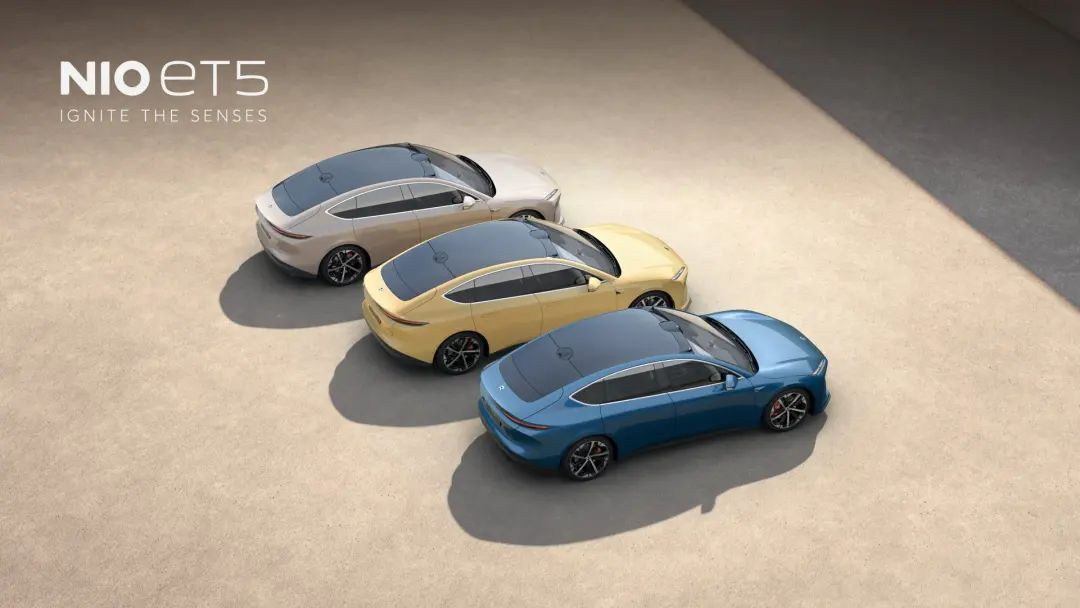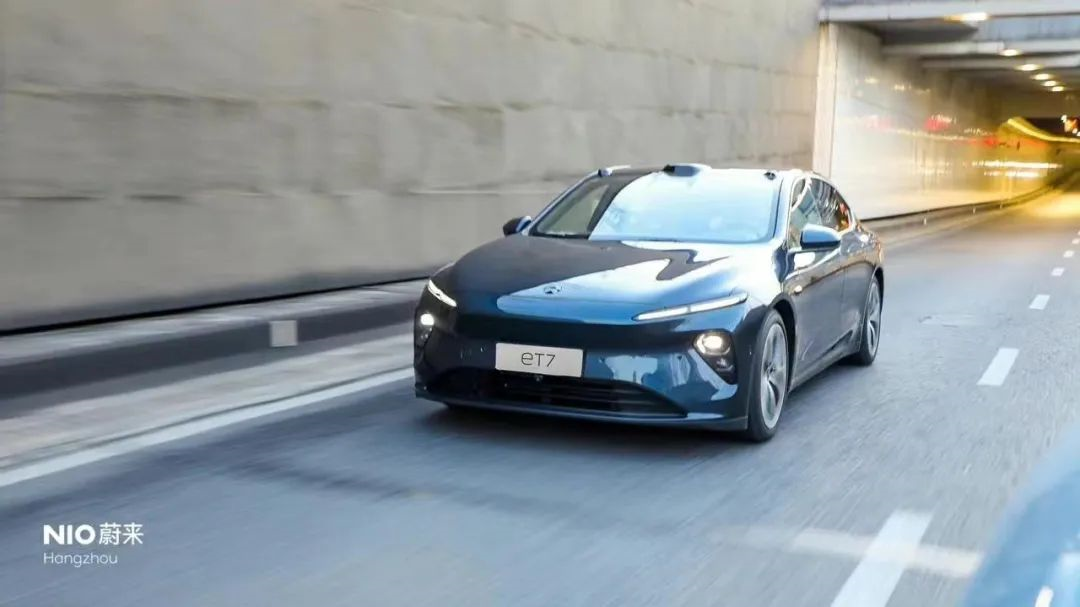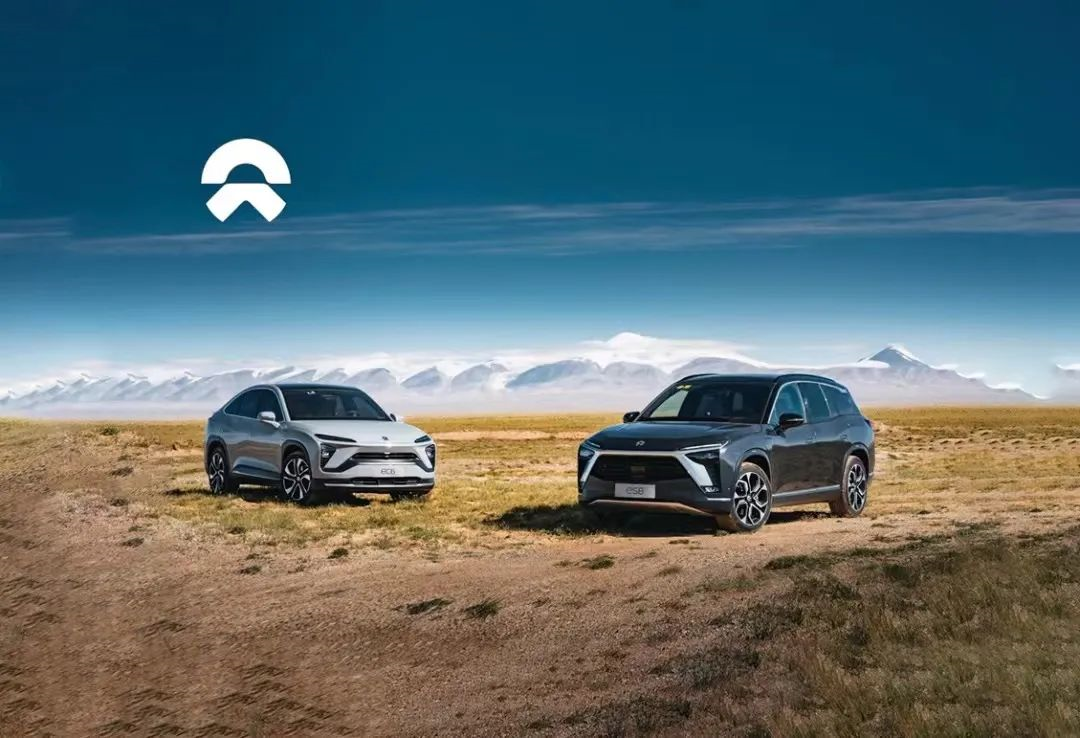Author: Michelin
“2021 is a year of replenishment of energy,” Li Bin described the past year on NIO’s 2021Q4 and full-year earnings call on March 25.
Indeed, the past year may have been a more complicated time for NIO. Compared to the monthly “real-time” announcement of sales results, when NIO will really have a new “outbreak” as Li Bin described the “accumulation of energy” and what it means will be a more interesting topic for the earnings call.
How far away is NIO from profitability? 2024?
For the past year of 2021, NIO’s financial statement could be described as “riding a bicycle to a bar, saving where you should save, and spending where you should spend”.
In the fourth quarter, NIO delivered 25,000 vehicles, an increase of 44% YoY and 2.4% QoQ. Despite the sales slowdown in the last few months due to various factors, NIO still delivered over 91,000 vehicles for the whole year, a YoY growth of 109.1%. This growth was also basically in line with the doubling of the domestic new energy vehicle market last year.
Beneath the sales growth, NIO’s Q4 revenue reached RMB 9.9 billion, with full-year revenue reaching RMB 36.1364 billion. The auto business was a key contributor, achieving revenue of RMB 33.1697 billion, a growth of 118.5%.
Many people speculate that NIO’s high pricing and high-end positioning limit sales growth. However, based on sales performance, NIO’s ASP (average selling price) is not decreasing but increasing. In Q4, NIO’s average selling price reached RMB 368,000, an increase of RMB 15,000 compared to Q3. As of January 2022, NIO’s brand’s average transaction price exceeded RMB 430,000, which is not only higher than that of other new-generation car makers but also higher than the average transaction price of BBA.
Therefore, although many suggest that NIO should follow Tesla’s footsteps and lower product prices to expand sales, it seems that the attractiveness of high-priced products for NIO’s potential audience is increasing. This implies that NIO’s product structure is continuing to move towards the high-end market, which is in line with NIO’s positioning as a “high-end electric car”. Therefore, it’s reasonable that NIO hasn’t planned to launch low-priced models before the introduction of its new sub-brand.
“There are no plans for price increases”.While the average selling price has been rising, the biggest surprise in the financial report may be NIO’s gross margin returning to over 20%. In Q4, NIO’s gross margin for vehicle sales reached 20.9%, and the gross margin for vehicle sales for the full year reached 20.1%. Setting aside the sky-high gross margin of Tesla, a gross margin of 20+% is still relatively impressive for both new and traditional automakers.
Speaking of gross margin, it is inevitable to mention the recent sharp rise in the price of raw materials and the announcements of price hikes by various automakers. Regarding this point, Li Bin responded: There are currently no plans to raise prices.
Starting from Q3 of last year, NIO adopted a 75-degree ternary lithium battery pack, which combines ternary lithium with lithium iron phosphate battery cores, which has played a significant role in optimizing costs. At the same time, several new models will be launched this year, and economies of scale will also distribute costs, making costs more controllable. Therefore, although commodity prices have been rising, Li Bin still optimistically stated that the gross margin can be controlled at 18% to 20% this year.
For consumers, keeping a stable price is indeed more reassuring than fluctuations up and down.
“Not Hesitating” to Spend Money
While the profitability of the automotive business is improving with enhanced profitability per vehicle and stable cost control, although the growth rate of sales is slowing down, it is still steadily increasing. NIO is, however, not hesitant to spend money on energy replenishment systems, sales networks, and research and development.
In the past year, NIO has increased investment in energy replenishment systems, sales networks, and research and development.
In Q4 2021, a total of 260 battery swap stations, 230 supercharging stations, and 90 destination charging stations were built. This number accounts for nearly 1/4 of the current battery swap and replenishment system. By the end of 2022, more than 1,300 battery swap stations, 6,000 supercharging piles, and 10,000 destination charging piles will be built cumulatively.## Introduction
As a translator in the automotive industry, my responsibility is to translate the Chinese text in Markdown format to English while preserving the HTML tags. My answer will focus only on correcting and improving the text without providing any explanations.
Content
In 2021, NIO invested over 4.1 billion yuan in research and development, a 53% increase compared to the previous year. These investments include in-house developed autonomous driving systems, the NT2.0 platform, and new power battery technologies. For 2022, NIO’s founder, Li Bin, has set an R&D investment target of 9 billion yuan, double that of the previous year, with the number of R&D personnel increasing to 9,000.
Both the establishment of a renewable energy system and increased R&D investment are essential for a car company to succeed in the long run but may not yield short-term results. Despite NIO’s increased revenue and gross profit margin in 2021, the company still incurred a net loss of 4.017 billion yuan, a 24.3% decline compared to the previous year. This, perhaps, is the cost of “accumulating energy,” as mentioned by Li Bin.
However, Li Bin has set a target for NIO to achieve a balance in the fourth quarter of 2023 and profitability throughout 2024.
Undoubtedly, NIO needs to continue investing heavily in both its renewable energy system and marketing service network, as well as its technological research and development to achieve its target. Nevertheless, the challenge of achieving profitability still lies in product sales volume.
Therefore, the key to NIO’s success is new products.
New products are the key to NIO’s success
For NIO in its current stage, limited revenue from its operational services, large-scale infrastructure investment, and continuous R&D require the growth of product sales volume to increase revenue.
Undoubtedly, 2022 will be NIO’s busiest year since its inception.
The team for new products is on the offensive
“On NIO Day in 2021, Li Bin announced that NIO would deliver three new models on the NT2.0 platform in 2022.” This time, Li Bin has announced the delivery schedule during the Q4 2021 financial report conference call:
“The first model, ET7, will begin to be delivered on March 28th. This car, which will be released immediately, carries the expectation of NIO’s delivery volume returning to its peak. However, as ET7 and the existing 866 model are both produced at the JAC NIO plant, a slow ramp-up of production capacity could be experienced, and it may not see an immediate effect on the results for the next month’s delivery performance report.”>ET5 will start delivery in September. This “semi-popular” model since its release can be said to be the key for NIO to open the sales threshold. NIO specifically built the new NIO Park Phase II factory for the production of ET5, which also demonstrates its focus on this model.
As for the previously leaked ES7, it will be officially released in Q2 and start delivery in Q3. We wonder if this 5-seater SUV can continue NIO’s assault on the SUV market?
These three new products, all equipped with the NT2.0 platform, are part of NIO’s product offensive. Starting in the second half of last year, the intensified hardware and software competition in terms of chips and computing power for intelligent EVs has affected the performance of NIO’s existing models like ES8, ES6, and EC6, which directly influenced the delivery volume of NIO. Therefore, NIO has started a product upgrade plan for these three models this year. The 2022 models of ES8, ES6, and EC6 will be launched in the form of an annual upgrade, equipped with the 8155 chip, 5G communication module, etc. Meanwhile, existing users can also enjoy hardware upgrade services.
Intelligent EVs have accelerated the development of the automotive industry while rapidly iterating on smart hardware and software, which also affects the usage experience of existing users. NIO’s upgrade plans for these three models are not only intended to improve the competitiveness of the 866 model, but also offer existing users another upgrade option.
For a new automaker like NIO, three new platform models plus three restyled models is definitely a busy year. Expanding the product matrix and volume also means that it needs to tackle potential problems that have not been encountered before.

For instance, production capacity. Currently, the JAC NIO factory, which is NIO’s first factory, produces three models – 866, ET7, and ES7, to some extent making the production management and ramp-up phase complicated, despite the production line’s optimization during the Spring Festival period. Meanwhile, the NIO Phase II factory in NIO Park is solely responsible for ET5’s production. According to William Li, CEO of NIO, the current production run rate is 60JPH, which translates to an annual capacity of 300,000 vehicles.
However, whether it is the first factory or the second factory, it may take until the second half of this year or even the end of the year to fully realize the production capacity, and it will also take time for the delivery volume to explode.
And for the supply chain, in the past period, the rise in commodity prices, the shortage of battery cells, and the shortage of chips have directly affected the delivery capacity of car companies. When product scales and order volumes increase simultaneously, the pressure that the supply chain needs to bear also increases with the shortage of chips and battery cells. Just like the chip shortage encountered by the automotive industry in the second half of last year, a small ECU chip may be the saving straw that obstructs vehicle production capacity.
New brand, already on the way
When will NIO launch a relatively affordable sub-brand? This question has been asked since last year.
Just like Tesla’s explosive sales growth after launching the more affordable Model 3/Y, launching a lower-priced model to penetrate the sinking market is also seen as a key node for NIO’s sales explosion. Regarding this new brand, Li Bin finally responded: A new brand targeting the mass market has already established a core team, defined a strategic direction and development plan, and the first batch of products has entered a critical phase of research and development.
It seems that the new sub-brand is already on the way.
However, before this, NIO still needs to solve the supply chain and production capacity problems to meet the needs of existing brands and new models, in order to cope with a larger sinking market.
Finally
In the past few months, NIO has had a particularly difficult time and needs a beautiful report card to prove the meaning of its persistence.
At the financial report meeting, Li Bin revealed that the sales volume of Q1 2022 will reach 25,000 to 26,000 units, which means that the monthly sales volume in March is likely to return to 10,000 units. With the delivery of new products, NIO’s new growth points will also begin to be released. This may be what Li Bin said, the “explosion” after experiencing “accumulation of energy”.
This article is a translation by ChatGPT of a Chinese report from 42HOW. If you have any questions about it, please email bd@42how.com.

